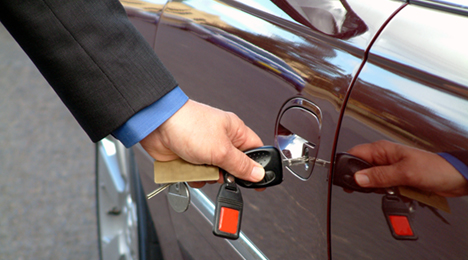Check your used-car manager’s thinking — then have conversation

By subscribing, you agree to receive communications from Auto Remarketing and our partners in accordance with our Privacy Policy. We may share your information with select partners and sponsors who may contact you about their products and services. You may unsubscribe at any time.
OVERLAND PARK, Kan. –
There continues to be a great deal of misconception in sales managers’ thinking about why they’re not able to increase used-vehicle volume. Industry metrics confirm that those dealers not performing at a minimum 1-to-1 new-to-used retail sales ratio are just not participating in the opportunities of the current market.
So why do our managers continue to have these misconceptions?
What follows are some common reasons we hear during our dealership consulting engagements. My responses should help you combat these misunderstandings that are prevalent in our industry today, and they’ll also help you have the conversation that will turn this thinking around.
“I need more inventory to sell more cars.”
You might, but first, do you understand and practice an aggressive “turn” mentality? If not, you are five years behind in your skill set. If you have an aging issue right now — why?
Should your dealer give you more dollars to invest unwisely? Just a hint: great operators do believe a 30-day (or faster) turn is attainable. Our Benchmark metrics validate that a 45-day turn is very common, regardless of franchise. Do you understand that if you turn your inventory more efficiently, your volume will increase?
Subscribe to Auto Remarketing to stay informed and stay ahead.
By subscribing, you agree to receive communications from Auto Remarketing and our partners in accordance with our Privacy Policy. We may share your information with select partners and sponsors who may contact you about their products and services. You may unsubscribe at any time.
“I cannot find the ‘right cars’ and when I do, they are too expensive.”
Come on! The vehicles are out there! You might have to work every day to source them. What makes you think you are smarter than the market which dictates the cost and sales price of inventory? What is your acquisition plan? What do you buy each week to inventory?
“If I price to market, my grosses are too low.”
This is so common. Question: Have you ever put more money into a trade to make a new car deal? If so, of course you reduced the new car gross — right?
If not, what have you just done to the integrity of your pricing model and your used unit gross potential? (Most OEM incentive money is being paid on new-car sales. Why in the world would you destroy your acquisition disciplines, bumping used trade-in inventory values and not reduce new-car gross to its true transaction value?)
A new-car deal is a new-car deal, albeit an OEM incentivized transaction. A used-vehicle trade acquisition is an investment decision. Buy it right or understand the impact on potential grosses, salability, and aging of your used vehicle dollar investment; in other words, your true return on investment of your dollars, Mr./Ms. Dealer.
Have the conversation.
Understand and clear the air on these misconceptions, if they apply. Ask your manager to give you a plan to increase used unit volume profitably beginning right now. Get it in writing. There is too much missed profit opportunity, let alone the impact of adding new customers to your owner base.
Note: This post appeared on an NCM Associates blog in July 2014. Paul Stowe is the former director of retail operations at NCM and recently retired after nearly 50 years in the automotive business.


